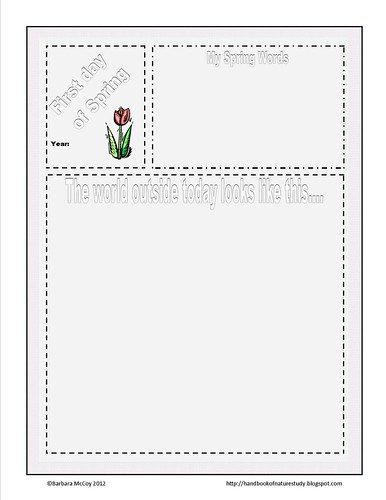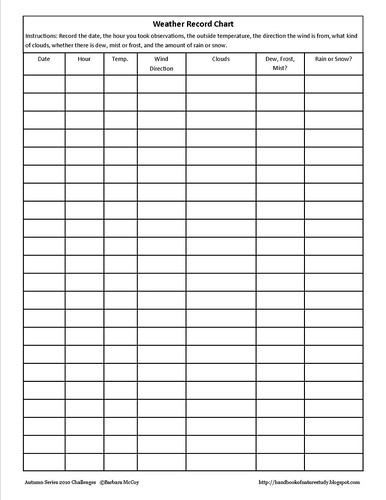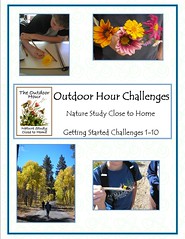The end of the month of March has arrived! Spring has burst out all over the place here in my part of California. I hope you have started to see the greening of the grass, the colorful display of flowers, and bright blue skies in your area. For our friends in the Southern Hemisphere, you are beginning to feel the change of season in a different way, still beautiful!
Thank you to all the families who sent in their blog entries to share and encourage all of us in what you are doing. I so appreciate the variety of a participants we have included in this Outdoor Hour Challenge Blog Carnival.
Enjoy!
If you missed any of our family’s entries, here they are from the month of March:
- Nature Walk – Of Butterflies and Labradors: We started off looking for signs of mammals but found the butterflies were the main attraction!
- Great Backyard Bird Count – 2014 Results: We counted birds in our yard as part of the Winter Bird Study.
- Our Spring Tree- Officially Starting a New Study: We now have a mystery tree to watch for the next three season. Hopefully we will figure out what it is in the meantime!
| Amazing flowers on this evergreen bush in my front yard…can’t remember the name! |
Winter Birds
American Robin and Blue Jays – Backyard Birds: Alex from Life on a Canadian Island shares her awesome bird images from Prince Edward Island!
| Lilac buds are ready to burst out. |
Winter Mammals
Winter Mammals at the Coast: Angie from Petra School has a fabulous entry for you to enjoy. They were on a hunt for mammal tracks and they ended up finding something exciting!
| Wallflowers are coming alive! |
Spring Tree
Spring Trees and Weather: Shirley Anne from Under an English Sky shares their Spring Trees and Weather with this edition of the carnival. What a wonderful look into their natural spring beauty. Don’t miss seeing their gorse and journal entries too!
Outdoor Hour Challenge-Welcome to Spring: Michelle from Following Footprints has put together a wonderful account of their March spring time nature study. Take a glimpse at their nature journals too!
Fun Filled March: Barbara at The Schoolhouse on the Prairie has submitted their March nature study activities. She shares a little of everything along with her beautiful images of spring in her neighborhood.
| Poppy Hill 2014 – American River Canyon |
Spring Weather
Signs of Spring at Last: Jennifer from Royal Little Lambs has submitted their signs of spring. It is so refreshing to see the colors and shapes of spring again!
Nature Study in March: Kerry from Keeping Up with the Kordish’s has had some cold weather. They share the month’s nature study activities in this entry.
Signs of Spring: Kris from On the 8th Day has some wonderful images to show what spring is looking like in their neighborhood. Don’t miss their nature notebook entries!
First Day of Spring-Signs of Spring: Angie from Petra School would love for you to take a look at their spring time at the Oregon coast. I love the images of the huckleberries!
Signs of Spring: Um Safufa shares their spring time observations along with some wonderful nature journals by all.
Spring Rainbow Color Walk: Janet from Pursuing the Journey and her children completed a photo hunt to find all the colors of the rainbow.
Potpourri
Icy Trees – Alex from Life on a Canadian Island shares their wintery weather observations.
Window Nature Study- March: Alex continues her monthly window nature study with a wintery scene.
DIY – Paper Folded Boxes: Nadene from Practical Pages shares there shell collection and a simple folded paper box tutorial with the carnival.
Notice board – Nature Study: Nadene also has submitted their notice board nature study area. You are going to be inspired to use these ideas for the nature study grid and the photo of the week.
Daffodil Dissection: Janet from Pursuing the Journey would love for you to pop over and see their flower study and journals.
Vermicomposting: Colleen from Sola Gratia Mom shares their adventure into vermicomposting.
Shores Acres Geology Walk: Eva shares a walk at a favorite seaside location.
Don’t forget to share your blog entries with the Outdoor Hour Challenge Blog Carnival. All entries done in April are eligible for the next edition. The deadline for entries is 4/29/14 and you can send them directly to me: ha*************@***oo.com or submit them at the blog carnival site (link on the sidebar of my blog).





















